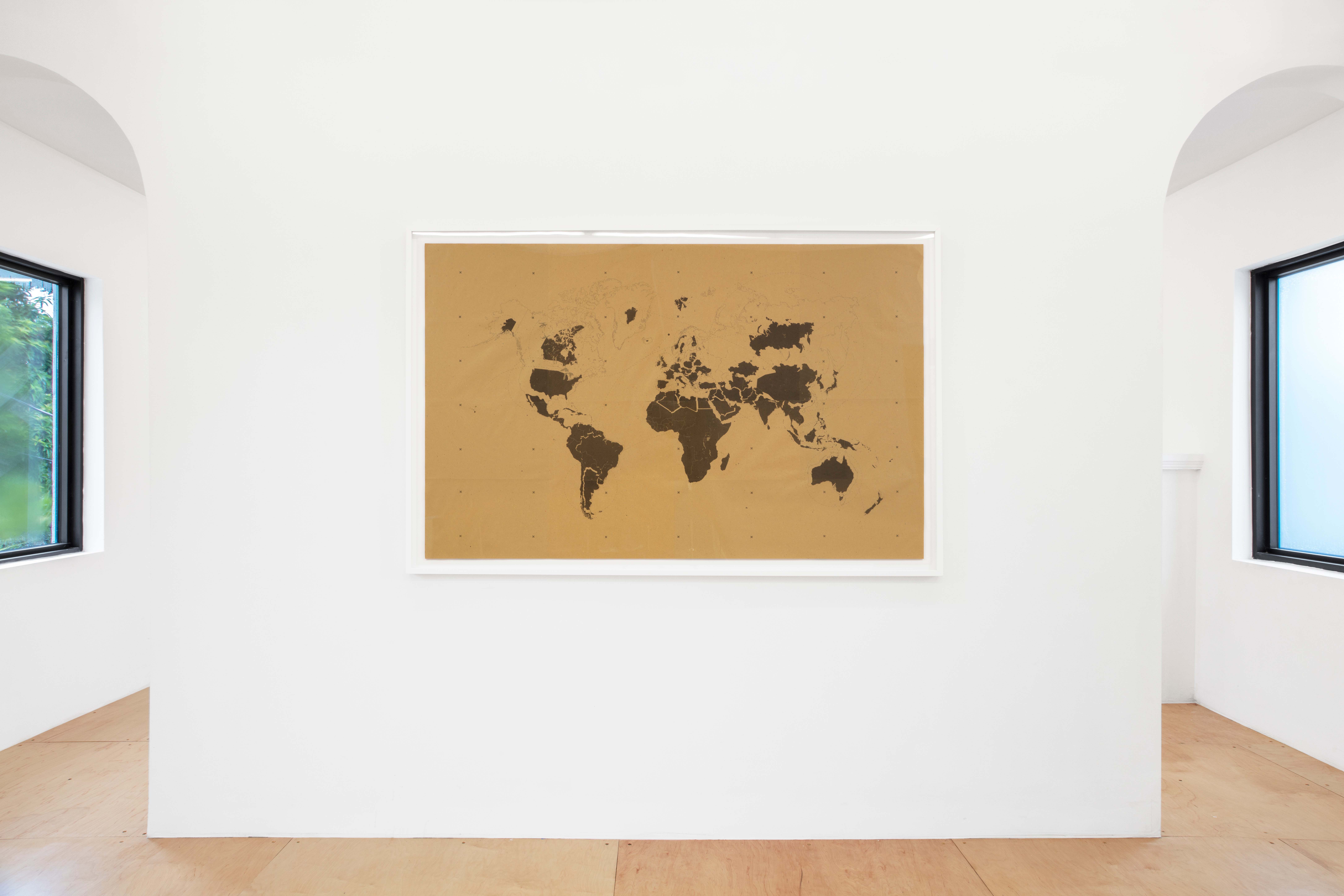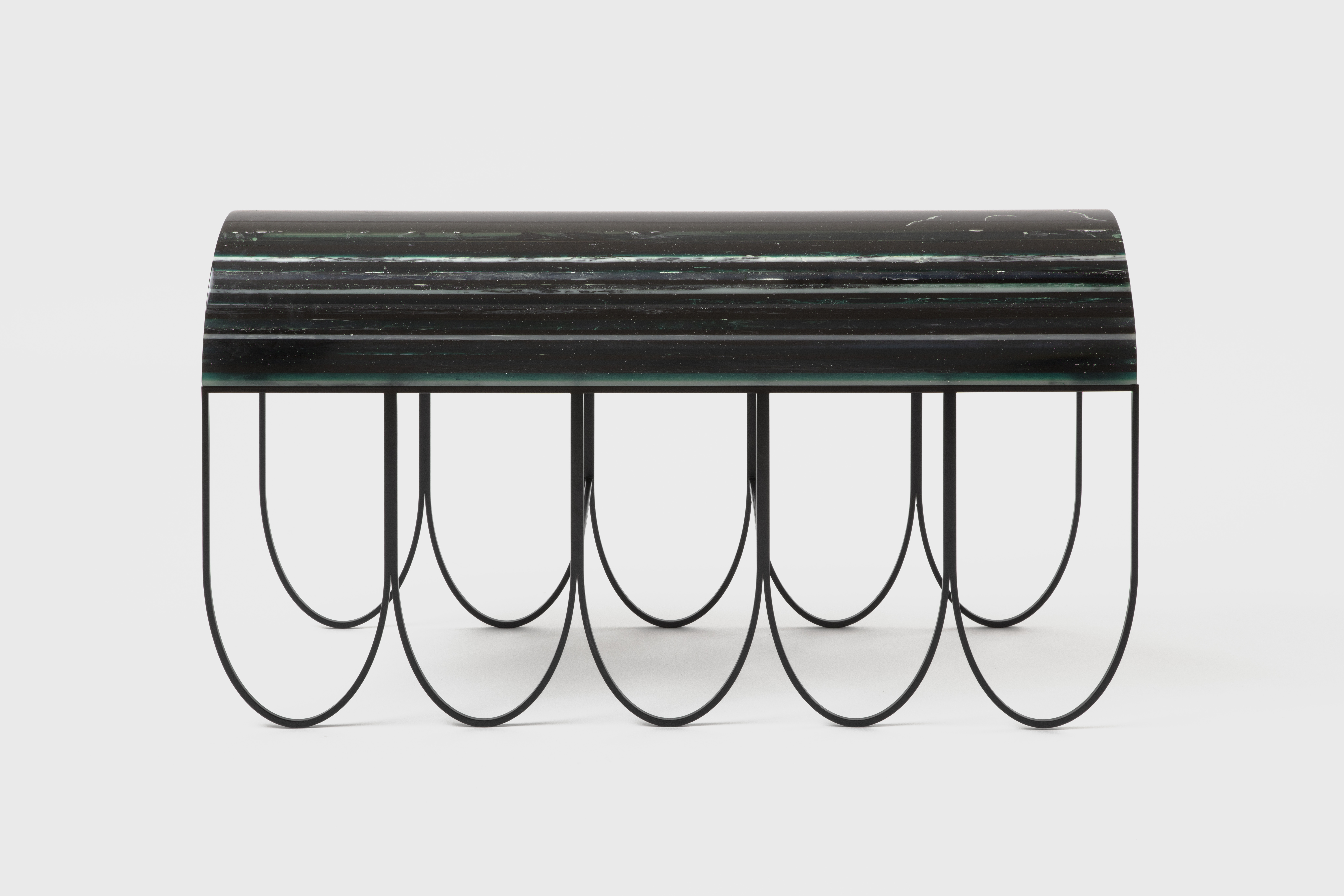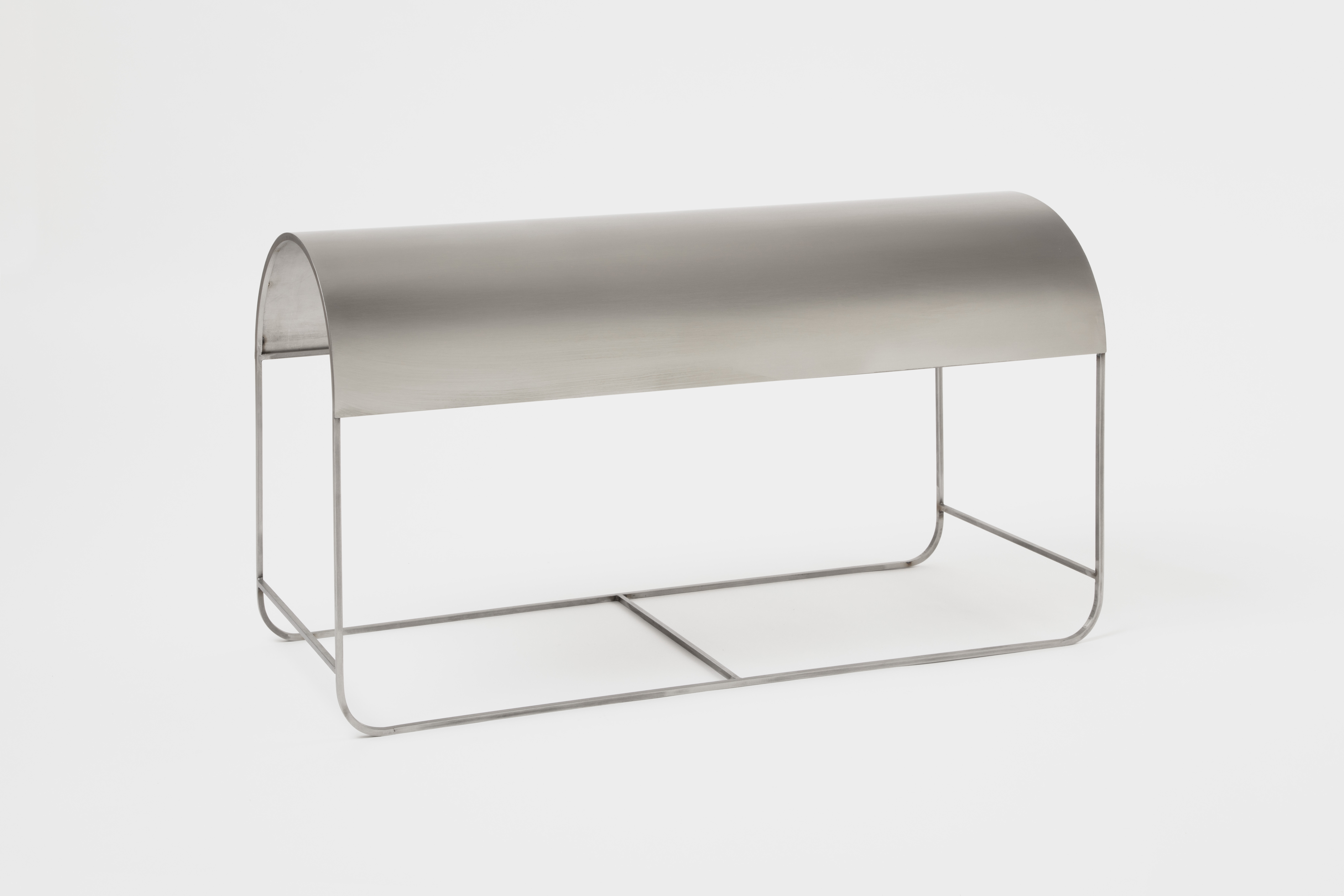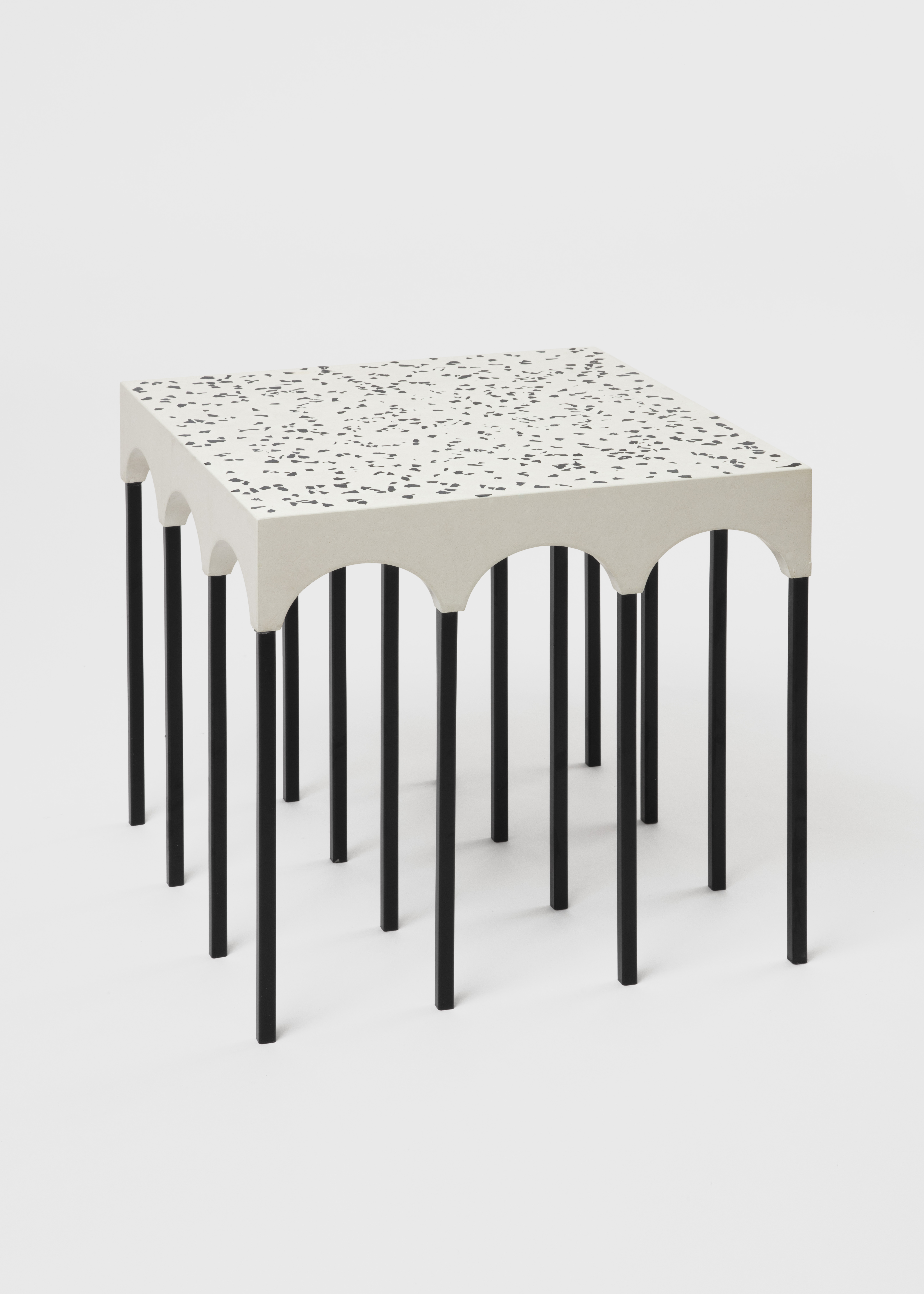“The grid determines everything—it segregates and delineates space,” Germane Barnes says of his hometown Chicago. For the architect and designer, it’s hard to separate his experience of cities from the structure: “The whole city is dominated by the grid.” It’s true for Miami as well, where Barnes serves as the assistant professor and the director of The Community Housing & Identity Lab (CHIL) at the University of Miami School of Architecture.
Within Unsettled, Barnes’s first gallery exhibition at Miami’s Nina Johnson gallery, two tapestries serve as maps highlighting redlining and segregation. Barnes explains that he dismantles the grids, “as a way to ask how we go across the line, blur neighborhoods, and distribute areas.” Woven using a classical horizontal Aubusson wood loom with a cotton foundation, Barnes’s inquiry begins with the act of weaving itself, challenging the medium’s processes and techniques. “The loom breaks through its own grid,” the Studio Barnes founder says, “creating overlays of color and pattern that create something new.”
Whether it is abstracting urban geometries in wool or working to eliminate segregation between neighborhoods through CHIL, Barnes’s methods stem from the desire to shatter seemingly imposed structures in order to propose new patterns and habitations. For Barnes, woven tapestries “signaled a way to think through the collision of my American Black domestic perspective with something timely and identity-based.”
Considering Black domesticity on a personal level, the materials Barnes employs each have an association a different city he has dwelled in: Steel is for Chicago’s mammoth towers; concrete pays homage to Miami Brutalism; and resin encapsulates his experiences in global metropolises. In the elongated resin and steel stool titled Los Angeles (2022), five thin hollow arch legs hold a seat—also a stretched arch—on both sides; in another square-shaped stool, small arch forms act as legs that elevate the terrazzo surface.
The majority of the exhibition’s ten artworks resulted from Barnes’s six-month residency in the American Academy of Rome where he had chance to explore one of his visual fascinations—the arch—in the form’s birthplace. From the concrete and CMU block archways of South Beach’s Art Deco architecture to Rome’s dwarfing marble and terrazzo arcades, the motif is an emblem of gentle shelter, a half circle that both envelopes and amuses the body. “Seeing a centuries old 30-foot-tall arch rather than South Florida’s nine-foot-high abstracted versions was eye-opening,” he says.
The half-year sojourn in the Eternal City also provided Barnes with a broader understanding of invisible labor: “Seeing the ruins in Ostia Antica gave me perspective on the sheer amount of people who never had the agency and authorship to what they built.” Lost at Sea (2022) is one piece in the exhibition that reflects on forced labor and migration. Printed on recycled Roman paper and cut and tiled with analog processes, the digital drawing depicts the timeline of African people’s transportation out of the continent. “People, objects, and vegetation were all taken across for trade while many were lost at sea,” he says. In addition to physical loss, ideas and their ownership also became amiss during forced migration as the work also includes detailed imagery of dates referencing to origins of the column structure that originated around Tunisia prior to the Greco-Roman culture. “Architectural history directly jumps to Doric, Ionic, and Corinthian, because a lot of the knowledge was lost at sea.”
When Barnes started working with local Roman paper during his residency, the only way to print digitally, he realized, was to cut the rolls of paper to a printer-friendly size. “I found myself cutting hundreds and hundreds of pieces of paper for hours,” he remembers. The repetitive and meditative process was not only was a reminder of care in craftsmanship but also the value in labor that often fleets before recognition. “If I created Lost at Sea in the U.S. where the printshop would cut the paper for me, without the same physical connection through time and care, it would not leave the same effect on me.”



